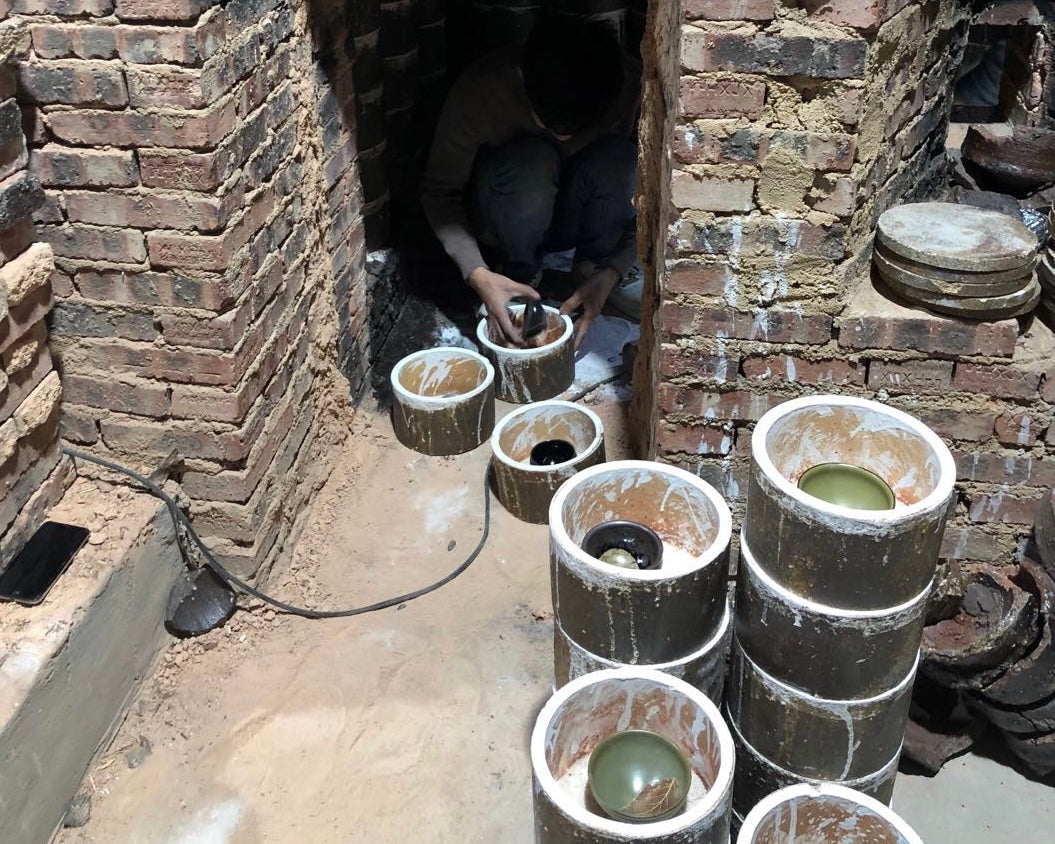What are the features of Jian Zhan?
1. Iron Body. This refers to the internal lining made from local clay from Jian Yang, with high iron content. Per the sampling inspection of Jian Zhan specimens in the Song Dynasty, the iron oxide content is as high as 7% on average.
2. Iron-based crystalline glaze. Because its glaze is derived from local raw ore, the iron oxide content can even reach 15%.
3. Ware Types. Here, the classic set has a restricted entry (there is a water line below the entry edge), a constricted entry (the entry edge is slightly retracted inward), an exposure entry (the ware body to the entry edge is a straight line, representing an inverted hat shape), and a trumpet-shaped entry (the rim of the entry diverges outwards).

4. One-time glaze. Because it adopts porcelain-packed firing “Zheng Shao”, it often has “Tear Drop” (namely, the glaze that flows downward under the influence of gravity at high temperature), and the edge of the entry dries easily.
“Zheng Shao” - Porcelain-packed firing, also known as "upward firing," is a firing method that uses the saggar to hold blanks. Before entering the kiln, place the glazed ware with the entry upwards in a special saggar, and use the saggar to isolate the flame from direct contact with the ware. Saggars are used to burn porcelain, which can effectively avoid polluting the porcelain with impurities like fireworks and falling ash, thus ensuring a clean glaze, and make the blanks evenly heated, which greatly improves the product quality. The saggars were first used to make porcelain in the middle of the Tang Dynasty.

5. Non-replicability. Due to large and multiple uncertain factors in the burning process, each Jian Zhan is unique. There is a common phrase in the industry, "one color goes into the kiln, and multiple colors out of the kiln."

What are the functions of Jian Zhan?
Maintains heat preservation, improves the taste
Any liquid in a Jian Zhan, whether it is liquor, beer, red wine, water, coffee, etc., will always taste sweeter. For the function of Jian Zhan in tea making, it exhibits a comprehensive effect of heat preservation and flowing water. Using Jian Zhan to taste tea will allow people to observe the water like milk, which is sweet and smooth, with a deep rhyme and dark fragrance.
What are the main glaze types of the Jian Zhan?
The glaze colors of Jian Zhan are diverse and most of them end up changing naturally, The main types of glaze are Rabbit Hair, Partridge Spot, Oil Drop, Yao Bian, Mirror Black, and single and multiple color glaze such as Persimmon Red, Tea Green (Tea Dust), Gray (Hui Bei), Iron Rust, etc. are natural glazes. White spots, iron rust stripes, gold and silver decorated ice are artificial decorative glaze or multiple glazed and fired.
Is Jian Zhan safe?
Authentic Jian Zhan follows the traditional firing methods and raw materials, and it adopts natural raw materials concerning mineral glaze, red clay, high-temperature soil, and plant ash. It conforms to the national daily-use porcelain standards, which is harmless and has water-softening behavior.
How to choose Jian Zhan?
The most important factor when buying a Jian Zhan is to choose your favorite glaze type. The stripes are clean and clear with high crystallinity are considered as high quality. Also, check for defects, including whether the shape of the ware is correct and whether there is a jumping glaze (namely, the exposed frame can be seen at the jumping glaze). Others like stomata, a slightly dry lip, and ice cracks are normal features. Avoid overly cheap ones, they can be either half handmade or machine-made, or Chemical glazed.
In the next article I will cover more about the types of patterns. For now, thank you all for reading and happy shopping!

